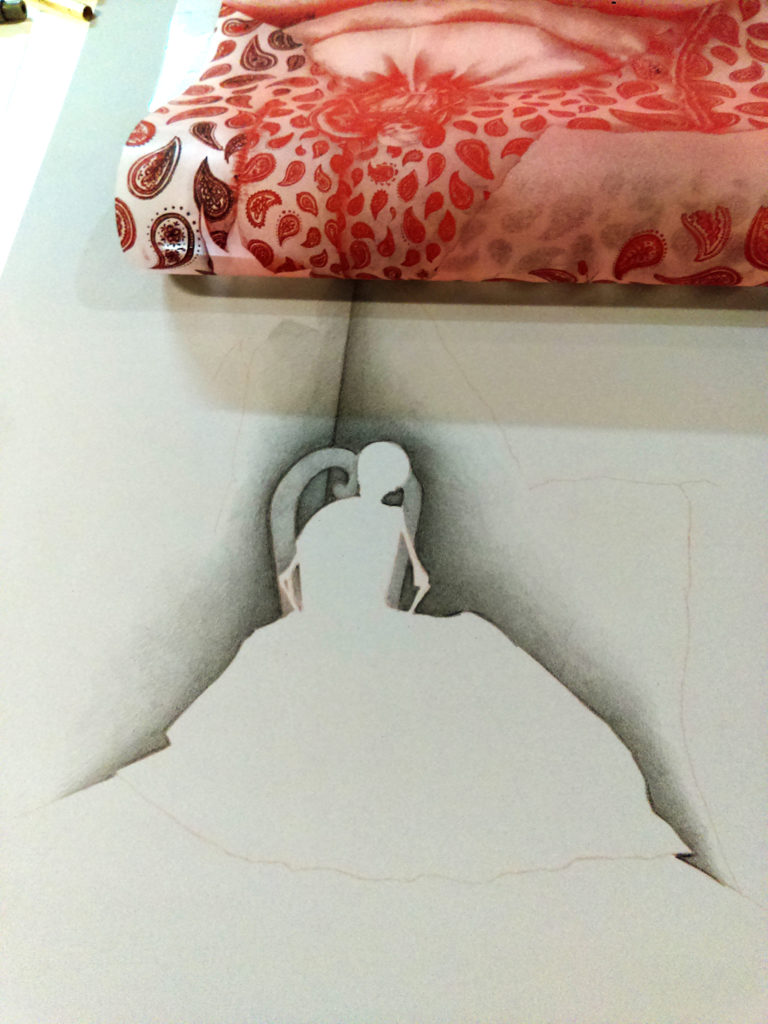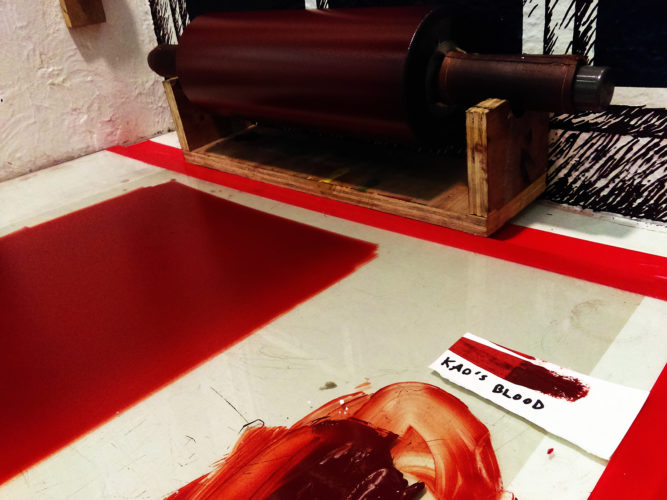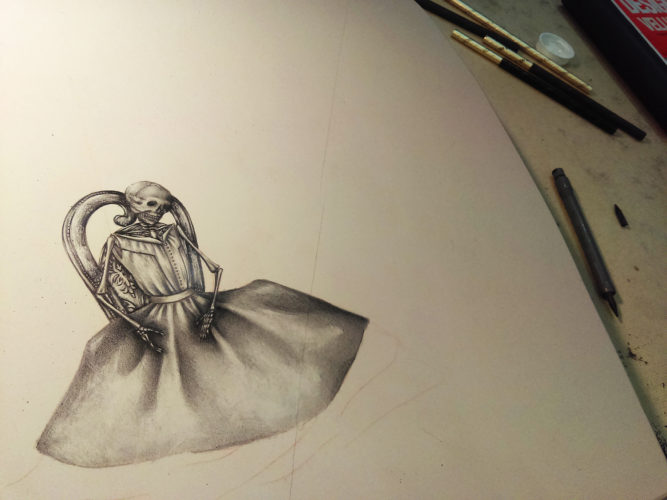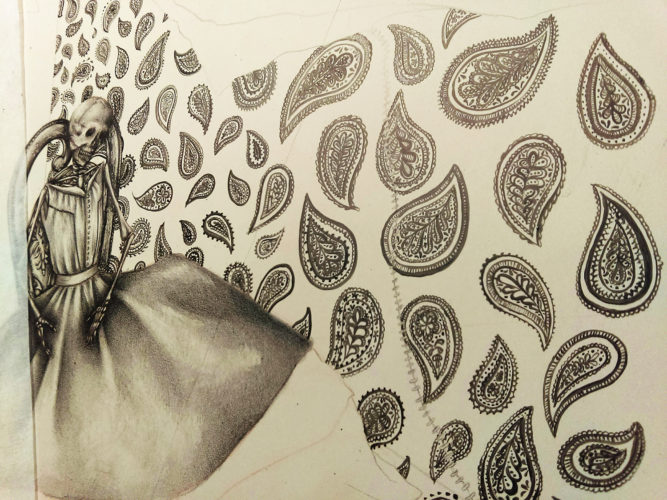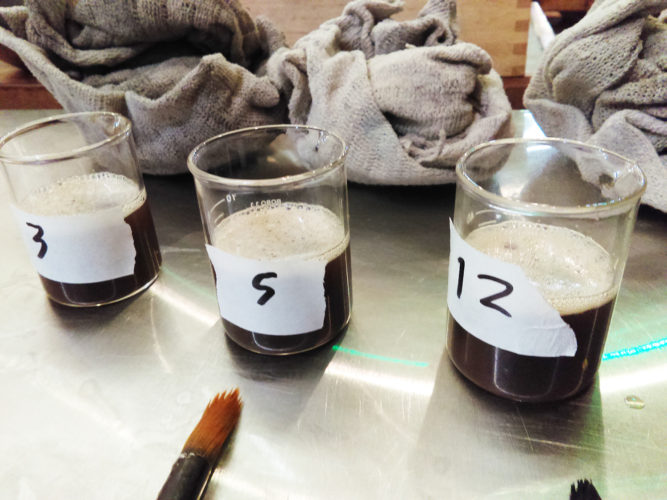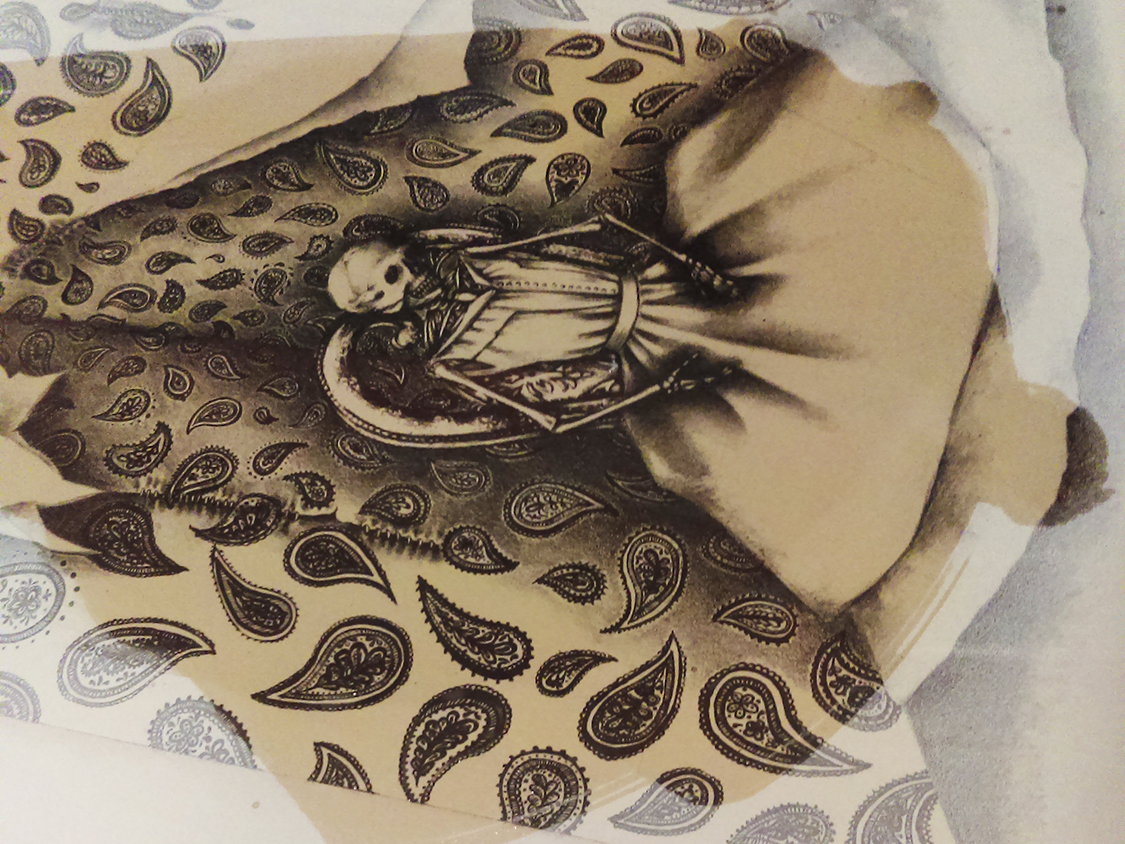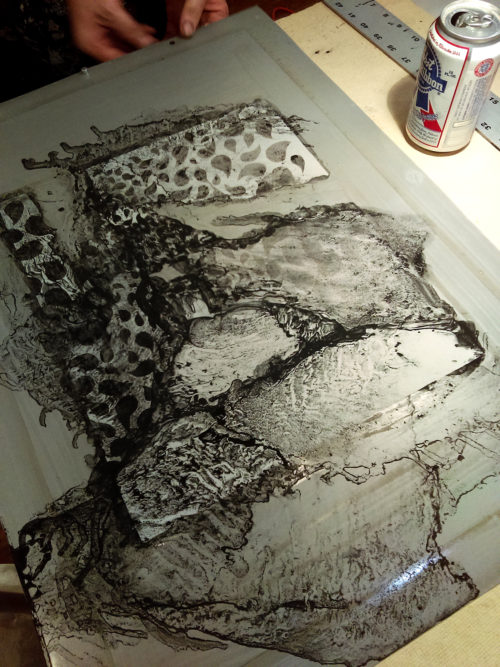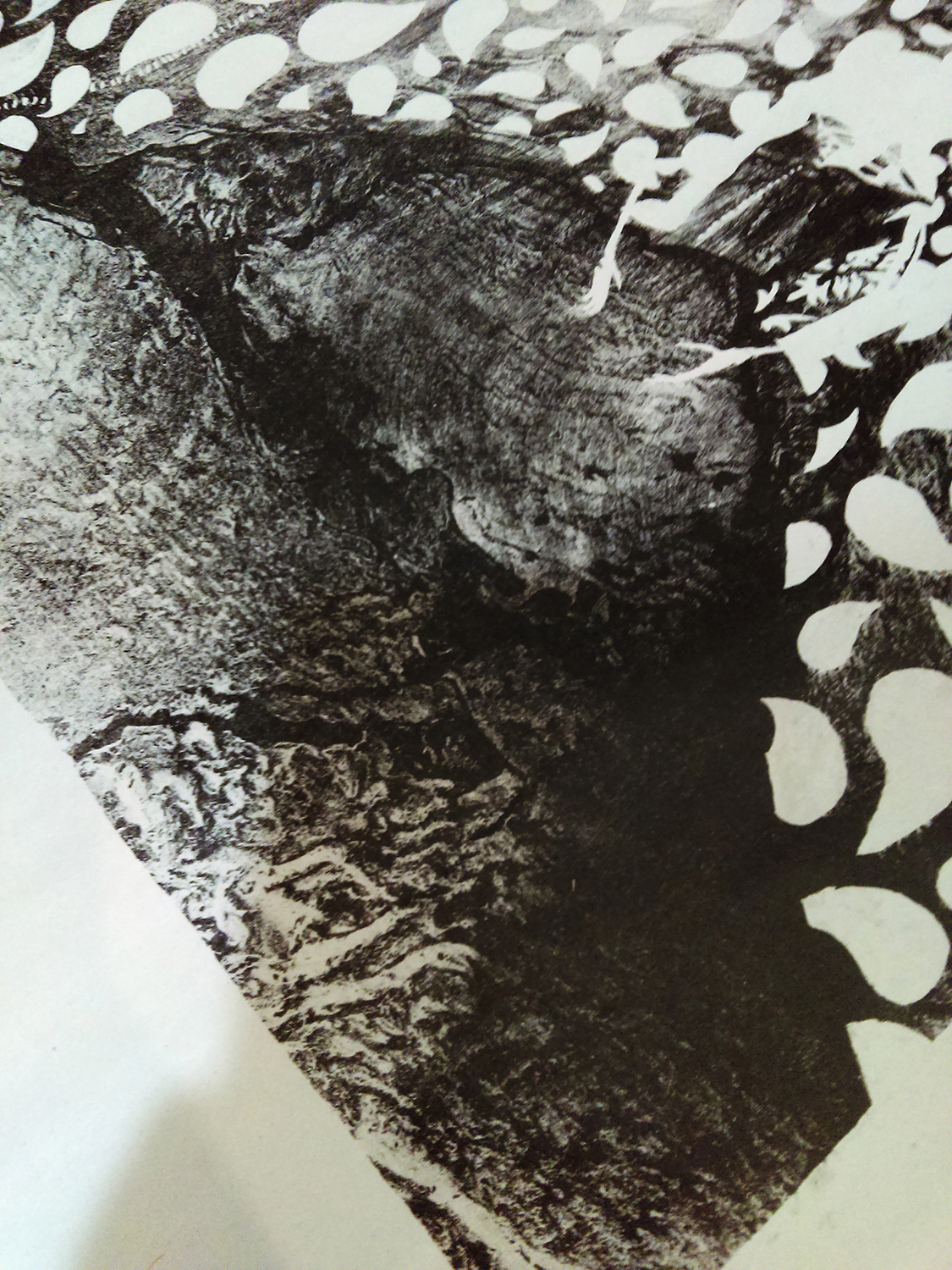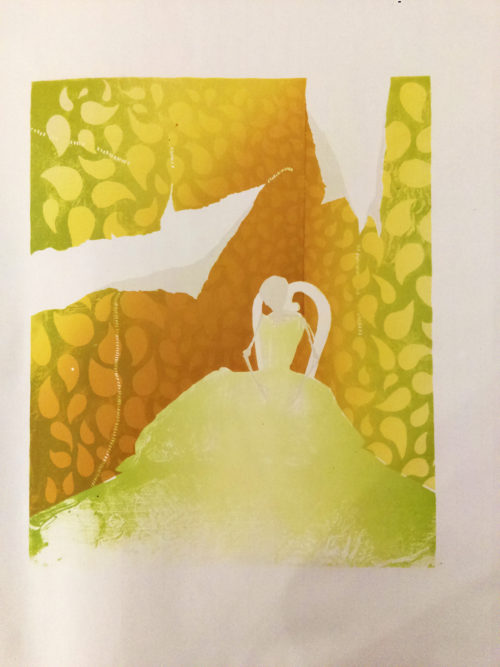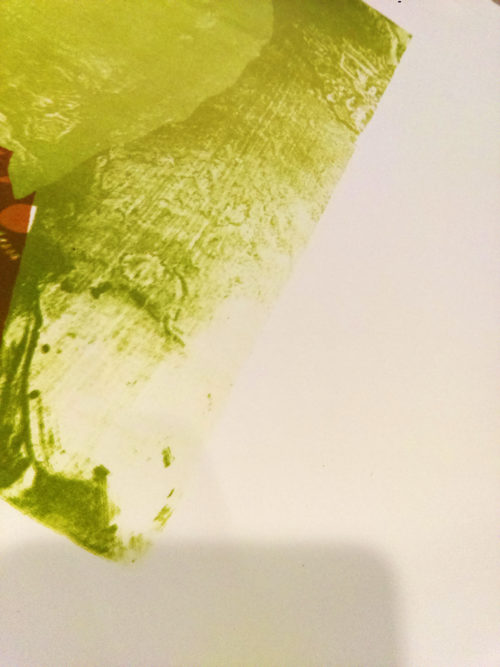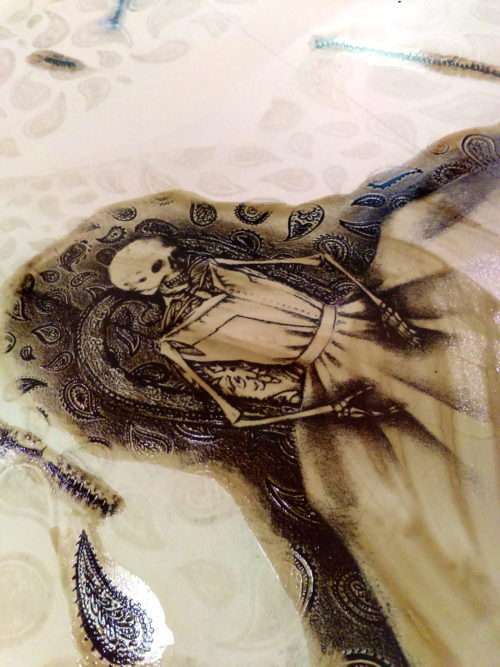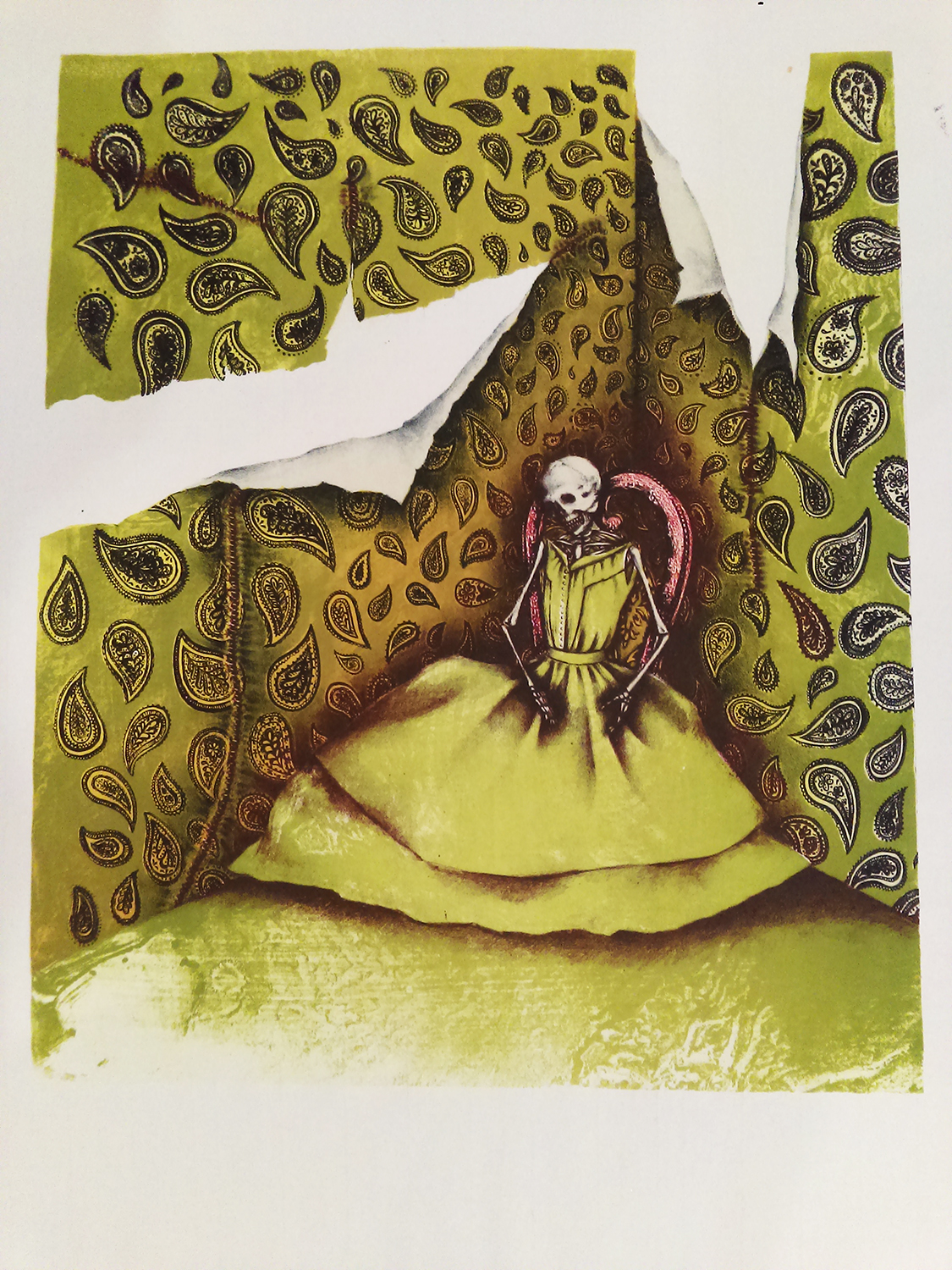Eight layer litho: “The Ministering Angel of Domestic Bliss” which was part of a lithography exhibition, “The Red Death”, curated by Doug Bosley

This print is part of a project documenting of the history of chemical poisoning which was inherently specific to women and children. Chemical poisoning became widespread starting in the Victorian era when a surge in the discovery of new compounds and the industrialization of cities led to a slew of household innovations. These novel developments lacked regulation and their hazardous nature went undetected to eager consumers. During this time, the Victorian home became known as a “reassuring sanctuary” where cleanliness and the appearance of luxury were prioritized. From arsenic-laced dresses to lead-based paint in children’s toys, these domestic poisons largely affected women and children.
The 18th century invention of Scheele’s Green, a pigment produced from copper arsenite, became wildly popular in the home as well as the garment industry throughout the 19th century. Everything from food to wallpaper to dresses was colored with the bright green pigment, and consequentially leeched arsenic into the skin and respiratory systems of unsuspecting consumers.
The Making of:
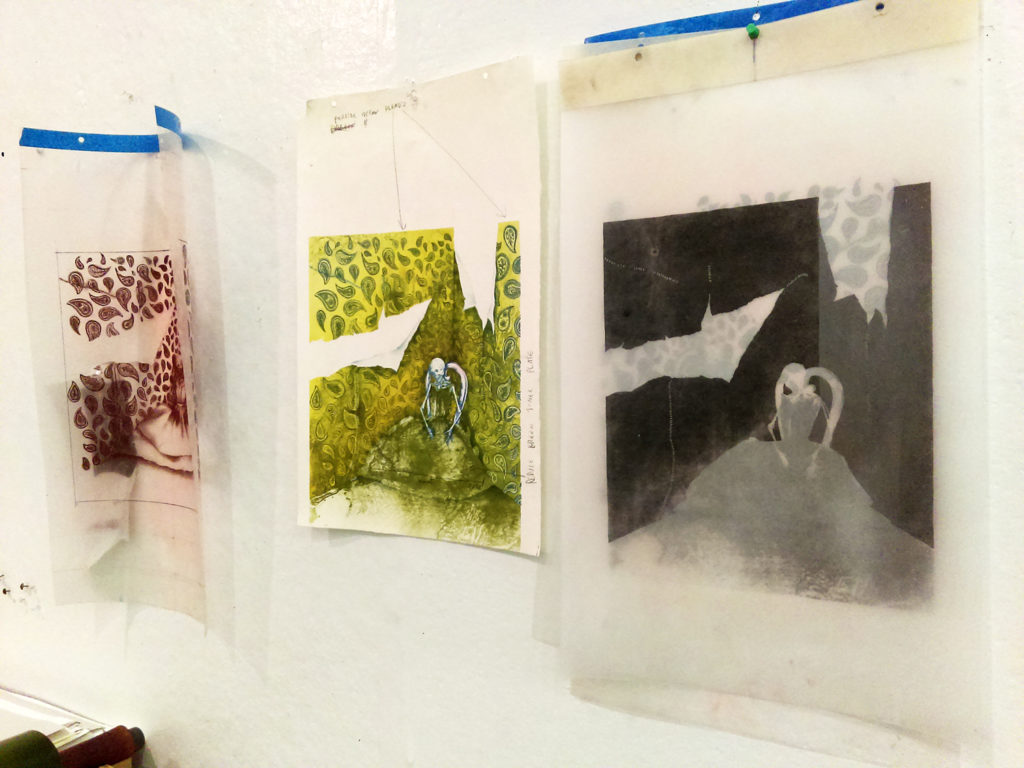
Step 1: Crayon drawing on limestone.
Step 2: Adding color
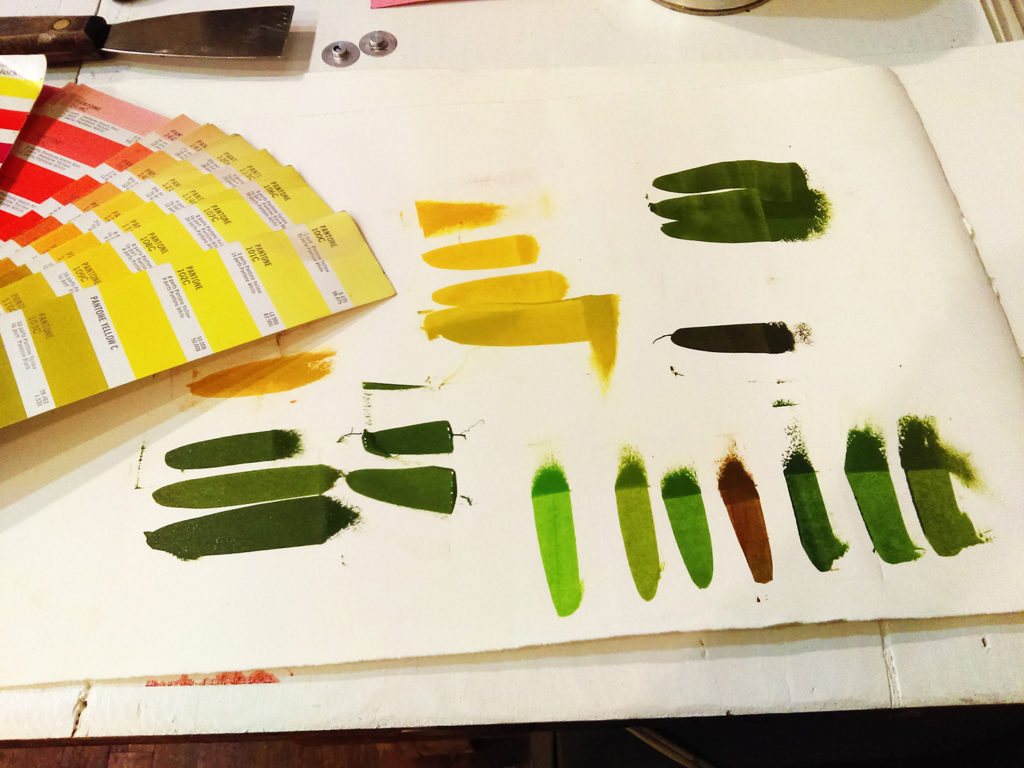
The first layer printed was white, for a subtle highlight in the stitches, skeleton, and folds of wallpaper. The yellow-ochre was printed with two separate plates. One layer was a blend roll printed diagonally, the second layer was a blend roll with the same colors printed vertically.
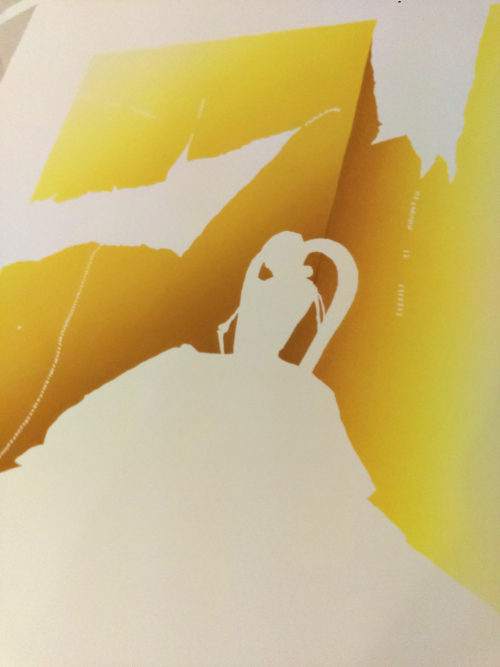
The green was a toner wash etched into an aluminum plate. This plate was printed twice. After the first toner wash was printed, the plate was counter etched using Hydrochloric and phosphoric acid, and a second toner wash was applied, darkening the area around the figure.
The key layer, the original drawing on the stone, was printed in dark blue.

Most of the paisley was scraped out of the stone, and a transparent dark red layer was printed over the remaining image to increase the density of the figure and stitches in the wall.
The final layer was a crayon drawing on an aluminum plate to increase contrast. This was printed with an opaque darker red.
